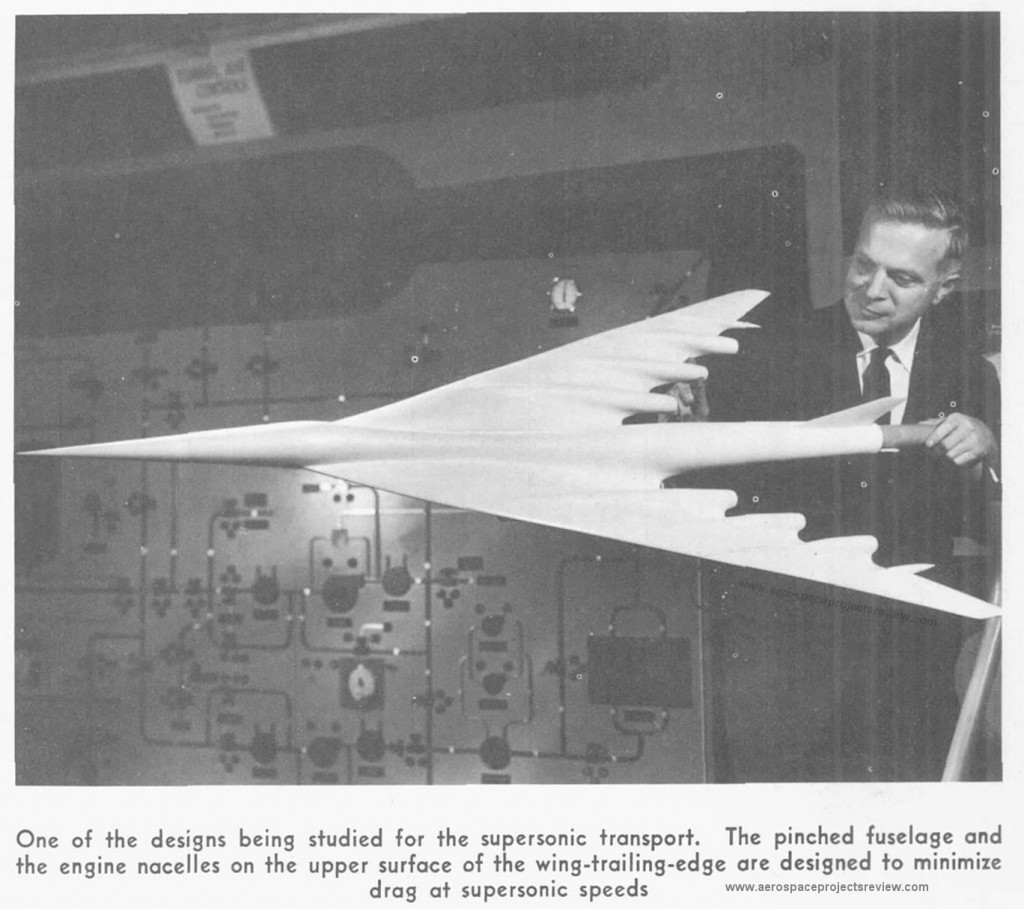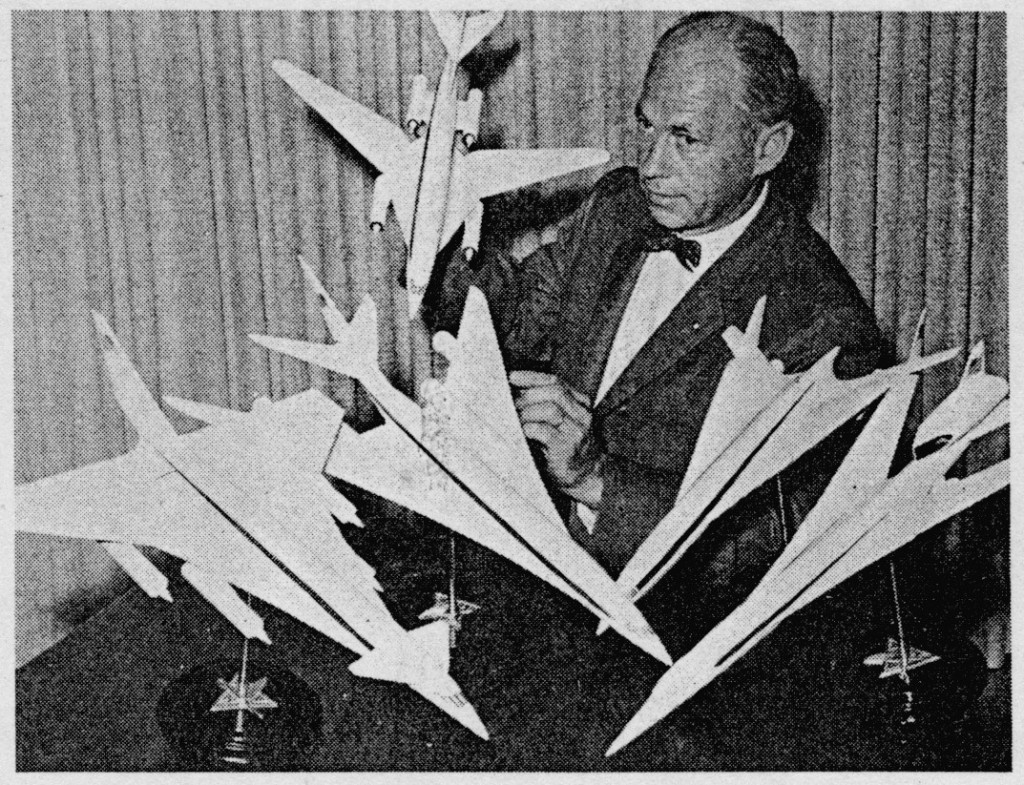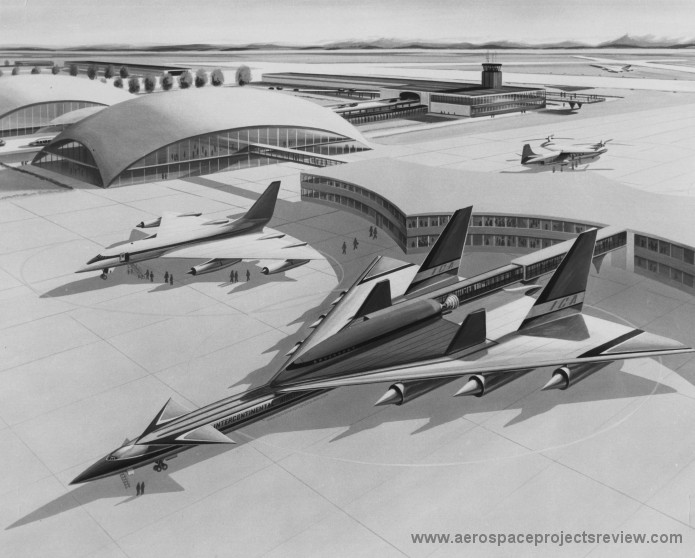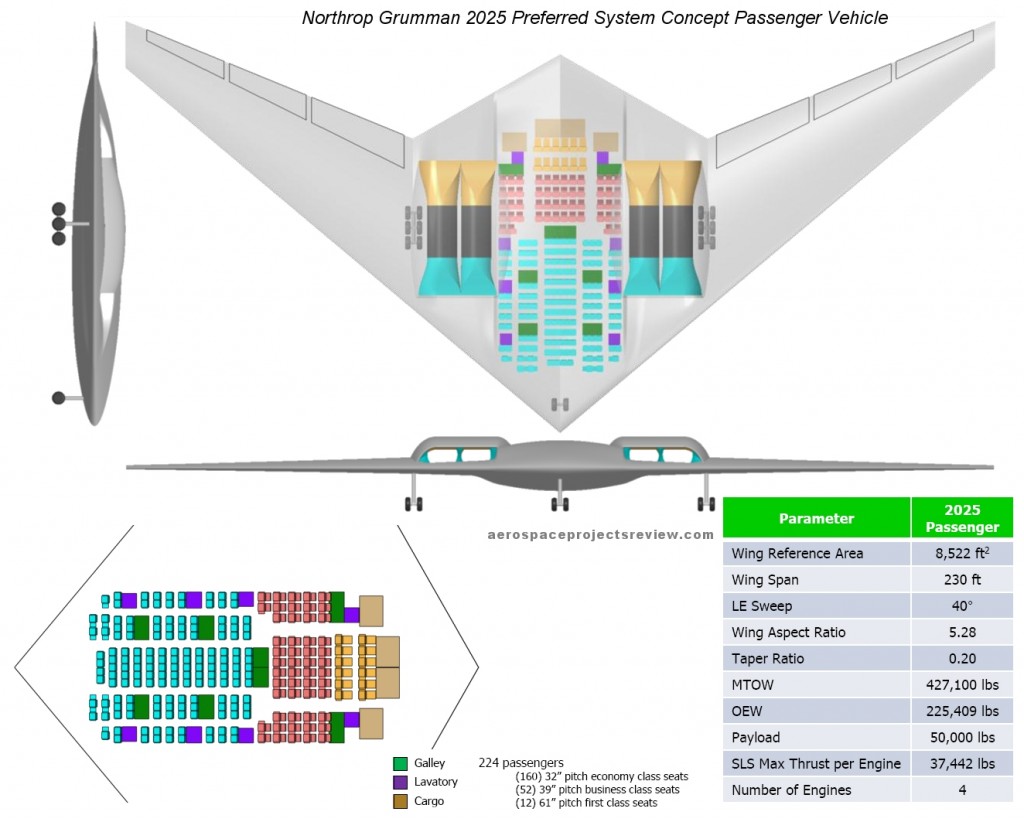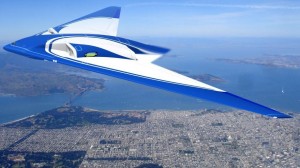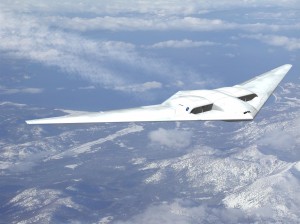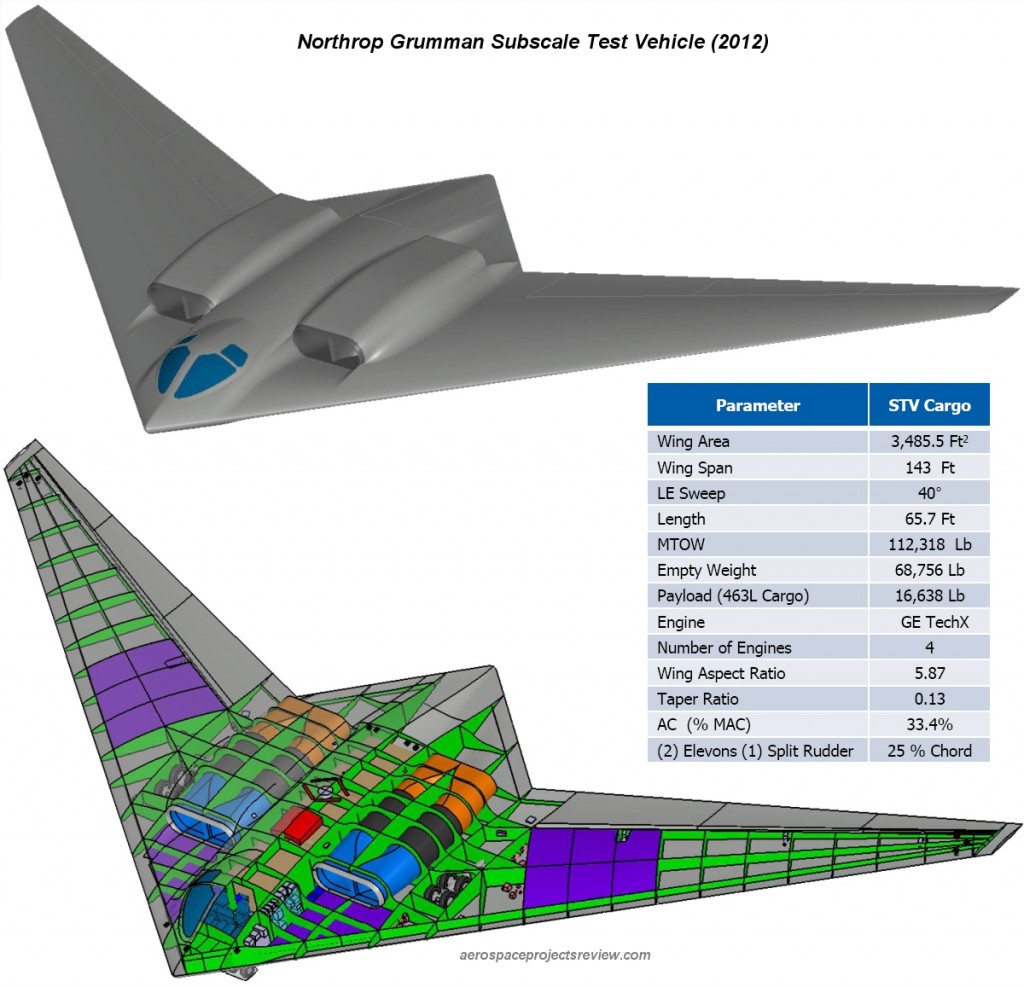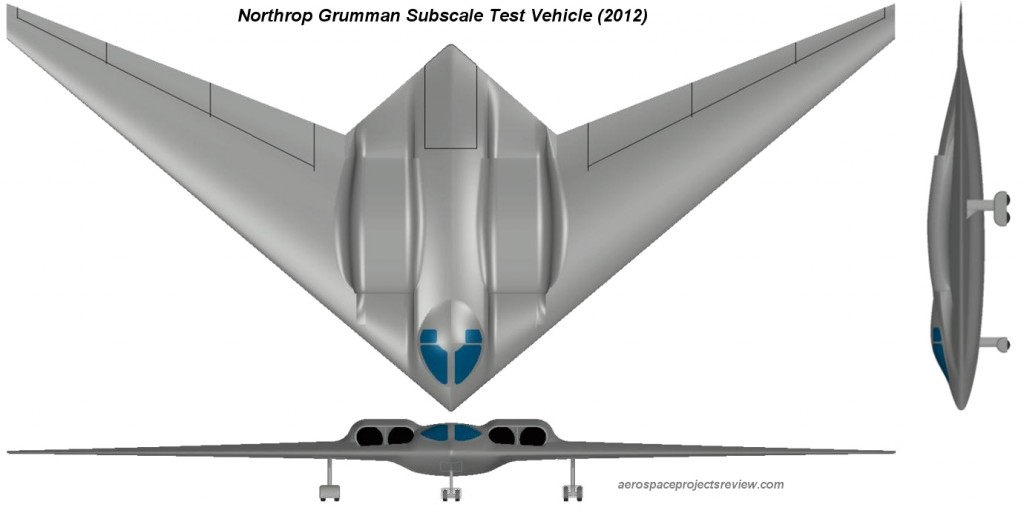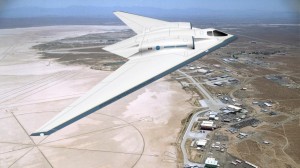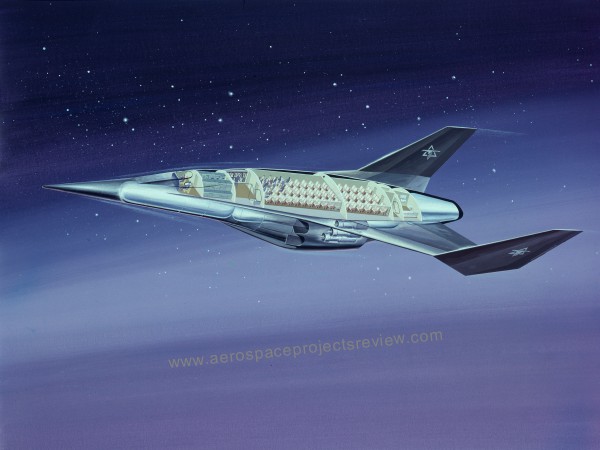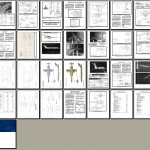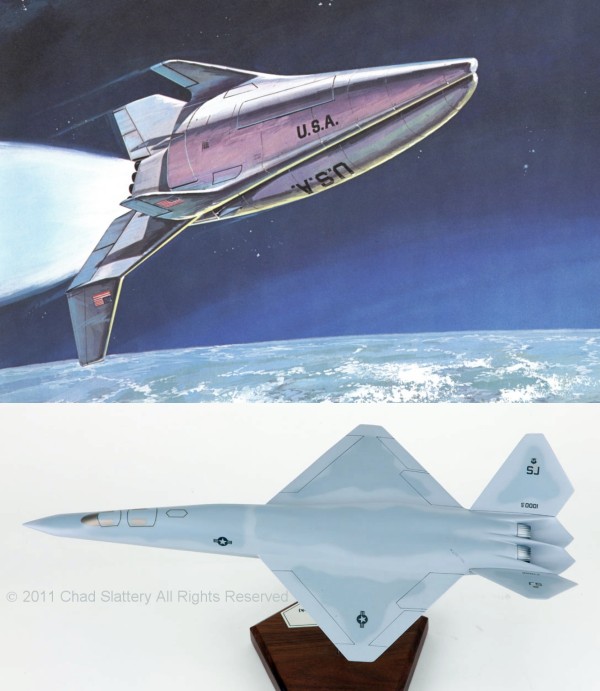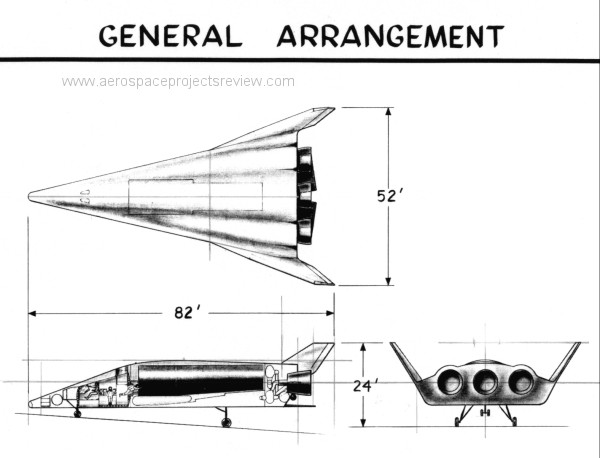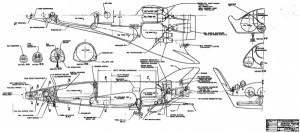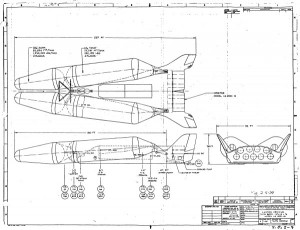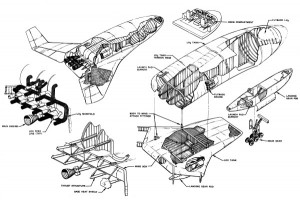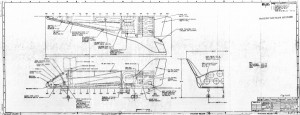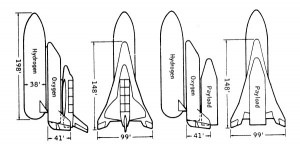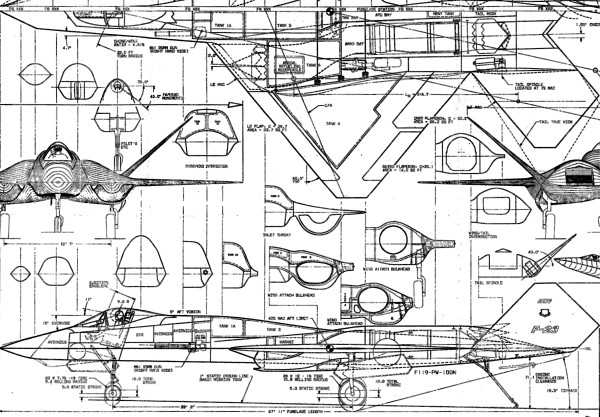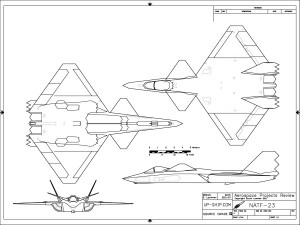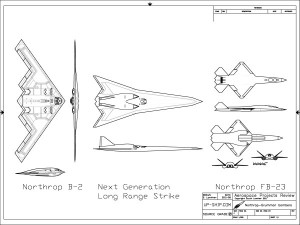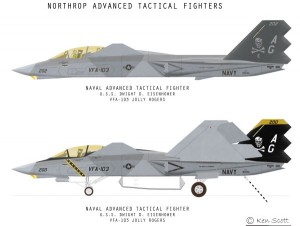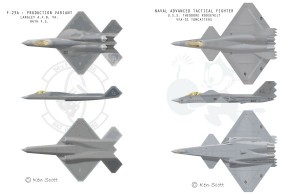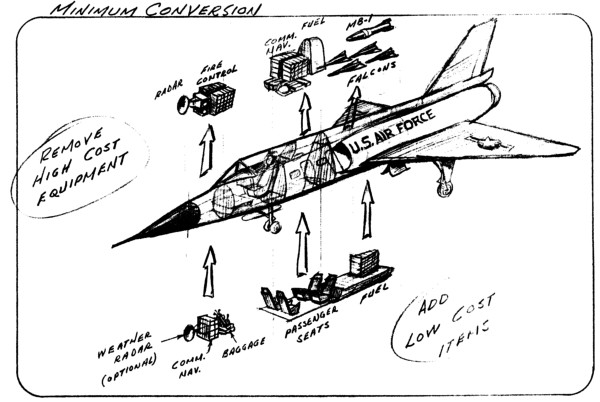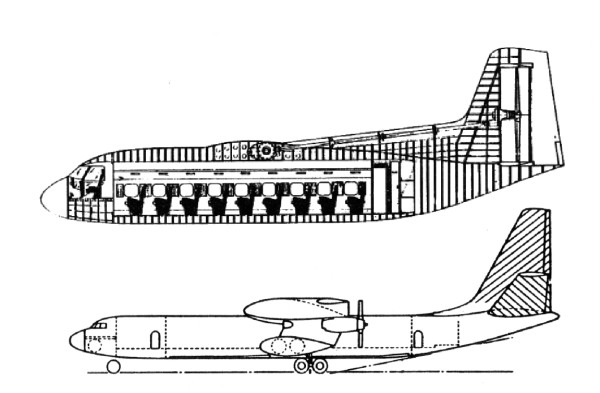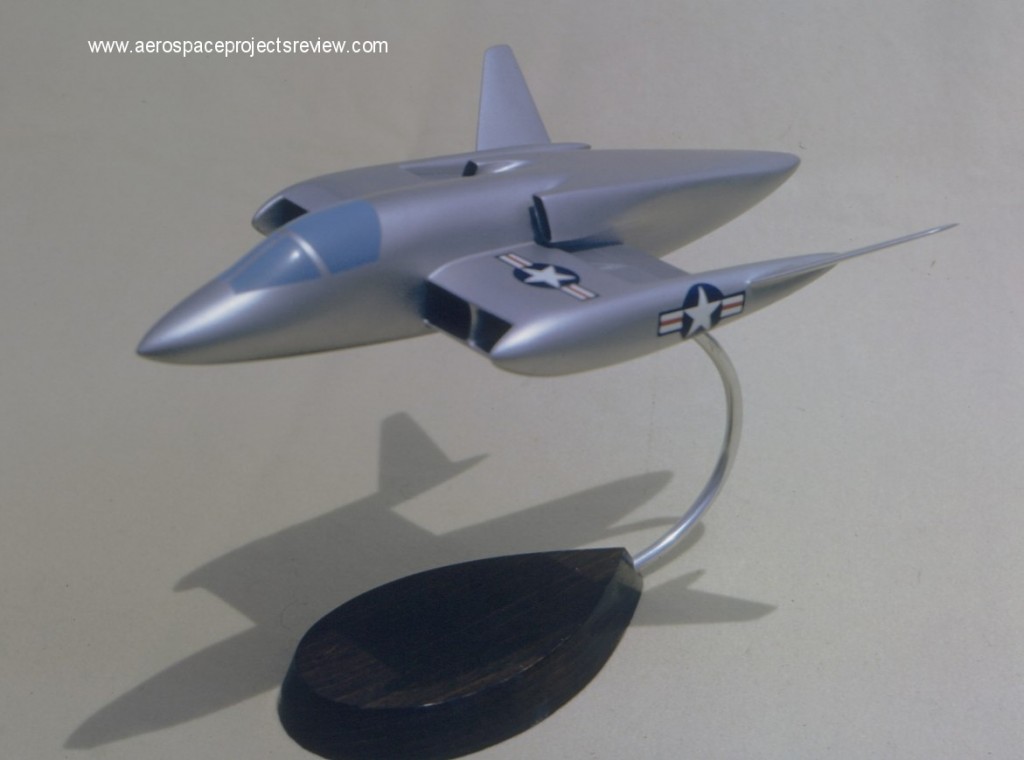From the Fifth Semiannual Report to Congress (NASA, 1961) comes a photo of a supersonic transport wind tunnel model. This configuration would have been quite difficult to translate into a practical airliner design; while the dedication to area ruling would have made it quite low drag at supersonic, it would have made manufacturing a nightmare. Additionally, the severe wasp-waisting of the fuselage would have made not only the structural design of the pressure vessel a challenge, it would have made the passenger seating layout quite a mess.
In 1960, Bell Aircraft released several paintings depicting a two-stage hypersonic passenger transport. The first stage was a multi-engined supersonic jet of fairly conventional configuration (though with very large 50,000 lb-thrust turboramjet engines), carrying on its back a rocket-powered second stage. The second stage was clearly influenced by Bell work on the Dyna Soar program.
The carrier would transport the second stage to an altitude of 20 miles and 5,300 mph. After release, the second stage would boost to 40 miles and speeds up to 15,000 miles per hour, permitting travel times from Los Angeles to Paris of one hour and four minutes for the thirty passengers on board. The vehicle was intended to enter service in the 1980-1990 timeframe.
Weight for the combined vehicle at takeoff would be 750,000 pounds. Span of the booster was 150 feet, length 200 feet. It’s unclear if this was a serious engineering design or purely speculative. Paintings and a display model show some notable differences.
You can download a 3 megabyte JPG file of the artwork; the link is HERE. To access it, you will need to enter a username and password. The username: the first word in the body of the text on page 6 of APR issue V1N3. The password: the first word in the body of the text on page 23 of the same issue. Note that both are case sensitive.
NG has recently unveiled their concepts for next generation jetliners under the NASA “Environmentally Responsible Aviation” program. NG is not known for airliners, but rather military vehicles… most famously the B-2 stealth bomber. Not surprisingly, their jetliner concept looks a whole lot like a stealthy flying wing bomber. It seems a reasonable suspicion that their work under NASA contract either makes use of existing military design work… or will form the basis of future military design work.
Since the Northrop Grumman ERA N+2 design is revolutionary (at least in terms of airliner design), they have produced a design of a Subscale Test Vehicle. At 143-foot span, it’s about 60% the size of the passenger version and 55% the size of the cargo carrying final version.
The STV would seem to be sized right for a bomber, while the passenger and cargo carrying version would be rather large… more sized for arsenal aircraft, loaded with a vast number of cruise missiles and the like.
Conceptual artwork from 1967 depicting a Mach 10 to Mach 14 hypersonic transport. Hydrogen burning scramjets would provide cruise propulsion at an altitude of 110,000 to 140,000 feet. No further data is available apart from what can be determined from the artwork. There are 136 seats, relatively few for an aircraft that is clearly quite large. The general configuration is similar to the hypersonic testbed previously posted HERE, especially the propulsion system & inlet arrangement.
You can download a 9.7 megabyte JPG file of the artwork; the link is HERE. To access it, you will need to enter a username and password. The username and password are listed on page 2 of APR issue V0N0. Note that both are case sensitive.
Downloading FAQ
I keep getting asked the same questions, so I guess I should have a Frequently Asked Questions page for my downloads. Well, here it is.
Q01: How does this work?
A: It’s not an automated system. The way it works is that when you place an order through Paypal, Paypal sends me an email notifying me of the order. I then reply to the email address listed in the order, providing you with the web address where you can find your document, plus the username and password you’ll need in order to access it.
————–
Q02: “I just ordered a document. It’s been a whole 2 seconds, and I don’t have it yet. Where is it?”
A: I’m asleep/out buying groceries/fighting off hordes of zombies. I’ll respond to your email just as soon as I can.
————–
Q03: “I just ordered a document. It’s been a whole 24 hours, and I don’t have it yet. Where is it?”
A1: Check your “spam bucket.” Some spam filters see response messages such as you’ll get from me as spam, since there is a web address listed in it.
A2: Are you using the email address attached to the Paypal account? The response email with all your download info will be sent to the Paypal-listed email address. If you are using someone else’s Paypal address, or something like that, then *they* will receive the reply.
A3: On rare occasion, the automated Paypal system that sends me order notifications fails to do so. Thus I don’t know you’ve ordered something. Feel free to send a “where’s my stuff” email to: ![]()
A4: Search your inbox. You might have gotten the message, but not noticed or recognized it. The header will be something like “Re: Notification of payment received” or “Re: Payment received from YourEmail@YourEmailDomain.com.”
————–
Q04: “I ordered a document for downloading, but the username and password aren’t working.”
A: By far the most common reason for this is either you’re typing the password wrong… or if you are using cut-and-paste, you are grabbing a spurious blank space. Try again, making sure to cut *just* the password.
————–
Q05: “I tried that, but it’s still not letting me in.”
A: The second biggest offender is your web browser. Something or other to do with cookies, or something. If you have another web browser (Netscape, Explorer, Firefox, whatever), try that.
————–
Q06: “I’ve downloaded a PDF file. What do I need to open it?”
A: Adobe Reader. It’s a free program.
————–
Q07: “I’ve downloaded a ZIP file. What do I need to open it?”
A: Any modern computer should have come with an unzipping program built in. If not, do a search for “unzip,” and download a program to your liking.
————–
Q08: “I ordered a drawing set, and can see the files named ‘XYZ halfsize.gif’ and ‘XYZ quartersize.gif,” but not the full size image. Why?”
A: Some of the full size images are quite large. Sometimes they are so large that operating systems and/or image viewing and processing programs simply refuse to show them. All of the full-size images I sell are viewable on *my* system, which is a bit antiquated… but that doesn’t mean that they will be viewable on *all* systems. This is why I include the “halfsize” and “quartersize” versions, so that everybody should be able to see the images. You do still have the full-rez image… try looking at it on another computer.
————–
Q09: “Ooops, I ordered the wrong thing. I wanted A, but I seem to have actually ordered B. Can I have A?”
A1: If the error is due to something screwy in the webpage – rare, but it has happened that a typo in the HTML coding can lead to this sort of thing – then I’ll fix you right up with a proper download of A. Keep the other item, free of charge.
A2: A slightly more common error is on my part… you order SDOC4, say, and I mistakenly send you the link to SDWG4. In that case, let me know, and I’ll fix you right up with what you actually ordered. Keep the other item, free of charge.
A3: If the error is due to you simply ordering the wrong thing… well… the problem with digital files is that you can easily make copies of them, and thus cannot really be returned. So if my policy was to automatically “correct” “mistakes,” then it’d be the easiest thing in the world to scam me right out of half my catalog.
So… no. If you wanted A but mistakenly ordered B, I’ll be happy to fill your *next* order for A.
————–
Q10: “I bought one of your documents, and want to extract the images from it for my own devious purposes. However, it’s password protected. Gimme the password. Gimme.”
A: The documents (air docs, space docs and APr’s, but not DCD’s) are password protected *solely* to try to minimise piracy of ’em. The documents will open just fine and will print just fine at high rez, but image and text extraction will present a challenge. I’ve had issues with people taking the data I’ve worked hard to find and prepare and then turning it around and reselling it (grrr). However, if you have a valid use for extracted images, let me know, and I’ll almost certainly fork over the relevant password.
————–
Q11: “I want you to add me to your mailing list.”
A: No can do. The system I use now requires that the person who wants on the mailing list add themselves (I can add you, or the system will think I’m a spammer). So, simply go HERE and add your email address.
I’ll update this FAQ as questions come in. Feel free to comment
Aerospace Projects Review has been re-working and re-releasing the original run of issues in order… until now. Just finished and uploaded is an issue that might not be expected… issue V0N0. Prior to publishing the first issue of Aerospace Projects Review, I put together issue V0N0, a short prototype issue that I released for free to see if people liked it and if it would be worth continuing with. There was much that could have been improved about that issue… and it has been improved. Issue eV0N0 is now greatly expanded to 56 pages… small by modern APR standards, but a massive increase compared to the original. The original articles have been greatly expanded, and all-new articles have been added.
Preview the issue here:
The table of contents for eV0N0:
The Drawbridge and the Pancake: One of the more unusual Space Shuttle configurations
Northrop N-31 Flying Wing Bomber: A series of turboprop-powered bomber designs
Martin XB-68: A supersonic tactical bomber concept
Aerospace History Nugget: Mach 6.0 SST: Three fuselages for the price of one
Kaiser Tailless Airplane: A flying wing cargo carrier
Boeing VTOL Intercity Transport: A jetliner that can land on your office building
Boeing Transport-To-Space: The spaceplane that needs to be assembled in space
Aerospace History Nugget: Curtis High-Speed Fighter Concepts: Hypothetical fighters designed for maximum speed
Aerospace History Nugget: Convair VTOL Tailsitter: An early VTOL jet fighter capable of supersonic speeds
It is available in three formats. Firstly, it can be downloaded directly from me for the low, low price of $6.50. Second, it can be purchased as a professionally printed volume through Magcloud; third, it can be procured in both formats. To get the download, simply pay for it here through Paypal.
——–
———
To get the printed version (or print + PDF version), visit my MagCloud page:
At long last, Aerospace Projects Review issue V3N2 is now available.
The main article, about 90 pages worth, covers the Lockheed STAR Clipper concept.This was a one-and-a-half stage space shuttle concept. Starting in 1968 for the USAF, the concept lasted well into Phase B of the Space Shuttle program for NASA, and in altered form into the 1990’s. This article has a very large number of detailed schematics of many different forms, including the original small 1.5 Stage To Orbit design, numerous variations on that concept, fully reusable two stage versions with manned boosters, giant concepts for Solar Power Satellite logistics and miniature versions for the USAF in the 1980s.
Also included is an article covering antecedents and derivatives of the Northrop F-23 stealth fighter. Included are early designs such as the “Christmas fighter” and several “platypus” concepts, the F-23A operational fighter design, the NATF-23 concept for the US Navy with aft mounted wings and canards, the single-engined Multi Role Fighter (from the competition that led to the F-35) and perhaps most interestingly, the F/B-23 regional bomber, of eBay infamy. This article is illustrated with a mix of photos of official Northrop display models, official Northrop diagrams, all-new scale diagrams and color artwork especially commissioned for this article.
Dennis R. Jenkins provides an article on a Convair concept for converting the F-106 interceptor into a small supersonic transport. Compare this to Convair idea of converting the B-58 Hustler into an SST!
And finally, two aerospace history “nuggets,” the Vanguard Model 18 VTOL transport and a Northrop laminar flow control multipurpose long-duration aircraft.
You can see the entire issue here:
It is available in three formats. Firstly, it can be downloaded directly from me for the low, low price of $10. Second, it can be purchased as a professionally printed volume through Magcloud; third, it can be procured in both formats. To get the download, simply pay for it here through paypal.
——–
———
To get the printed version (or print + PDF version), visit my MagCloud page:
ALSO AVAILABLE: V3N2 Addendum, with 65 pages formatted for 11X17 sheets. Includes larger format (and higher rez images) along with additional artwork and diagrams that were not in issue V3N2 due to space constraints.
V3N2 Addendum download order: $5.00
———
In the 1960’s Vought extensively studied a concept for VTOL propulsion known as ADAM (Air Deflection and Modulation). This used a bank of horizontally oriented turbojets exhausting into a common manifold that formed the main structure of the wing and which drove larger-diameter fans. The exhaust from the jets, and the thrust from the fans, could be directed either aft for forward thrust or down for vertical thrust. Vought proposed the ADAM concept for everything from small single-seat fighters and ground attack aircraft to large military and commercial transports.
A few of these designs are presented below:
A photograph taken in the 1960′s showing a Vought ADAM (Air Deflection and Modulation) VTOL fighter concept display model. ADAM used engines in the wings with thrust deflection to achieve VTOL performance.
Scan made from a slide. No further information on this particular design concept.
More after the break.
